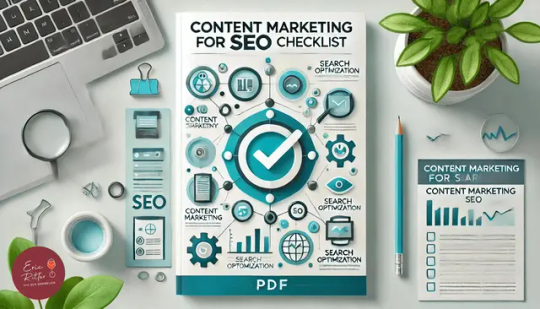#3. UX or better User Experience
Explore tagged Tumblr posts
Text
Why Dubai Businesses Need To Partner With a Professional Website Development Company
In the digitally-first world of today, a good website is something that a business can't afford not to have any more. The city of Dubai is known as one of the global innovation hubs and is the home of thousands of businesses competing to receive attention in such a busy market. So, to stand out from the crowd and maintain an effective online presence, there is a need to collaborate with a professional Website Development Company in Dubai. Here are several reasons why the businesses of Dubai should do this.
1. Expertise and Innovation at one's Fingertips
The skilled teams of designers, developers, and digital strategists man the professional website development companies in Dubai. Keeping themselves updated with the latest technologies and best practices prevalent within the industry are all their pursuits. The accessibility of such expertise means having a website which is visually attractive yet functionally adequate, user-friendly as well as technologically state-of-the-art. While digitalizing your presence, one would find all that brought into play by deploying AI-driven chatbots and responsive designs.
2. Custom Websites for Local and International Readers
Dubai companies service diverse audiences, both locally and in other parts of the globe. A professional website development service will therefore understand the characteristics of the Dubai market-place, including cultural sensitiveness, consumer preferences, among others. They can always come up with customized websites responding to your target audience effectively, ensuring a seamless flow of user experience that causes engagement and conversion.
3. UX or better User Experience
User experience determines the success of a website. A website which is not designed well will lead to frustration from visitors, who then leave, causing a higher bounce rate and missed opportunities for sales. Professional developers emphasize intuitive navigation, fast loading pages, and mobile-friendliness of the designs. These together make for a great user journey which keeps visitors engaging and likely to take the desired action such as purchasing or contacting your business.
4. Search Engine Optimization (SEO)
However beautiful your website might look, it is worthless if nobody can find it. Web Development Company in Dubai always factor in SEO best practice when developing, such as optimization of page speeds and meta tags, ensuring that your website is mobile-friendly and also clean coding. They are constantly improving your search engine ranking. More visibility brings more organic traffic or leads and sales.
5. Cost-Effective in the Long Run
A well-developed website minimizes the risk of technical issues, reduces maintenance costs, and ensures scalability as your business grows. Additionally, a professional website helps generate higher returns by attracting and retaining customers more effectively.
6. Focus on Core Business Activities
When outsourcing Web Development Company in UAE needs, you have more time to focus on core business activities. Professional companies handle everything from the initial design and development stages of a website through maintenance and updates, thus providing one with more time and resources to devote to important matters like customer service, marketing, and business expansion.
7. Support and Maintenance
Websites need to update and maintain themselves regularly. Otherwise, they get outdated and insecure. A professional website development company keeps providing support to solve problems, implement updates, and keep your website running perfectly. This proactive approach may avoid downtime and keep running your website smoothly, with a seamless experience for the users.
8. Competitive Advantage
Competition in the market is at its peak here in Dubai, and therefore, designing a professional website for yourself will keep you miles ahead of the competition. Well-performance of the website lends an impression of your business and brand with respectability and professionalism to your customer who tends to associate them. With this, your position further gets stabilized by strengthening their trust on your self.
Conclusion
In terms of succeeding in the currently trending digital world, a company of Dubai would need to enter partnership with a professional website development agency. Starting from providing solutions tailor-suited according to the client's business needs to improving the customer's experience and providing post-launch support so that you lead the market, these professional website development agencies are quite the backbone of your thriving business. This investment in professional website development will help you have a good standing online but also in generating long-term growth and profits.
#a good website is something that a business can't afford not to have any more. The city of Dubai is known as one of the global innovation hu#to stand out from the crowd and maintain an effective online presence#there is a need to collaborate with a professional Website Development Company in Dubai. Here are several reasons why the businesses of Dub#1. Expertise and Innovation at one's Fingertips#The skilled teams of designers#developers#and digital strategists man the professional website development companies in Dubai. Keeping themselves updated with the latest technologie#user-friendly as well as technologically state-of-the-art. While digitalizing your presence#one would find all that brought into play by deploying AI-driven chatbots and responsive designs.#2. Custom Websites for Local and International Readers#Dubai companies service diverse audiences#both locally and in other parts of the globe. A professional website development service will therefore understand the characteristics of t#including cultural sensitiveness#consumer preferences#among others. They can always come up with customized websites responding to your target audience effectively#ensuring a seamless flow of user experience that causes engagement and conversion.#3. UX or better User Experience#User experience determines the success of a website. A website which is not designed well will lead to frustration from visitors#who then leave#causing a higher bounce rate and missed opportunities for sales. Professional developers emphasize intuitive navigation#fast loading pages#and mobile-friendliness of the designs. These together make for a great user journey which keeps visitors engaging and likely to take the d#4. Search Engine Optimization (SEO)#However beautiful your website might look#it is worthless if nobody can find it. Web Development Company in Dubai always factor in SEO best practice when developing#such as optimization of page speeds and meta tags#ensuring that your website is mobile-friendly and also clean coding. They are constantly improving your search engine ranking. More visibil#5. Cost-Effective in the Long Run#A well-developed website minimizes the risk of technical issues#reduces maintenance costs
0 notes
Text

I am so tired of this brand pissing contest.
All of the metal bricks do pretty much the exact same thing. There isn't a better one. Just a slightly different user experience.
It basically comes down to 3 things. UX preference, ecosystem, friends/family.
Some people like the UX of iOS, some prefer Android. Either will do almost all of the same things. Android allows for more customization and tinkering. iOS tends to keep things stock but has more reliable apps—though Android development has improved.
Some people have PCs. Android and Google services tend to work better with a PC.
Some people have MacBooks and iPads. You would be silly not to get an iPhone at that point, because the integration of Apple products is seamless and kind of amazing.
And finally, what is everyone else in your group using? If they are mostly on iPhones, you will find communicating a little easier if you also have an iPhone.
There is one thing Apple does better than other manufacturers that I should include. Longevity. They support their devices for pretty much their entire lifespan. They allow software updates for as long as your phone will tolerate them. And since their hardware design is unified, you can always count on getting a well made product no matter the price point. No need to research each model to see if it is prone to break or has an exploding battery. This point makes me a little frustrated because so many iPhone users will upgrade every year for some reason. Unless there is a new feature you absolutely need, this is wasteful.
Android flagship phones tend to have decent longevity and get continued software updates. But there has always been an issue with the more budget models being forgotten about after a year and receiving no more software. You need to do a lot more research to see if the manufacturer of a particular line of phones has a history of quality manufacturing and good support or if they abandon their phones once the warranty period is up. I tend to steer people toward Pixel phones if they don't feel like doing the research. Google has been decent about long term support so far.
You have to evaluate your circumstances and choose the platform that will serve you best. In all honesty, you can make either work regardless. And you will probably have a few frustrations no matter which you choose.
Brand loyalty is stupid.
Pick what suits you best.
178 notes
·
View notes
Note
Hi there, Love your work! I'm also doing stuff in Unreal and it feels like it's rarer to find other indie devs using it. I love how clean all your UI feels, and UI is something I seem to really struggle with.
Do you have any recommendations for workflows / tips / sources etc for getting better at UI?
Also I'd love to know more about the material / shader workflow for your latest post if you have more information anywhere.
Thanks :)
Hello there! Thank you!! I hope you don't mind me answering publicly as I feel like some people might be interested in the answer!
I really appreciate your UI (User Interface for those not knowing the acronym) compliment as it's something I've spent a long time working on and specializing in, in my career as a software engineer. UI/UX often goes completely unacknowledged or taken for granted even though it takes a lot of time and hard work to create and develop. In the engineering world I frequently had to advocate for and explain user experiences to those who didn't have as deep of an appreciation for UI or a very sophisticated understanding of why a good, visually appealing user experience makes, or on the flip side, can break everything. I think it's a very challenging, overwhelming topic to grasp and communicate, but just by being interested in it you're already way ahead!
There's a lot going on with UI. From visuals to knowing common design elements to successfully conveying a story to the user to implementation to testing to designing for accessibility to animation and I probably didn't cover everything with that run-on sentence. There's frontend engineers out there whose role is solely to maintain and improve UI component libraries for companies. And that's without throwing games, whose UIs are all uniquely visually tailored to their experiences, into the mix... I could keep going on about this honestly, but I'll get to what I think you can do personally! 1. Learn about common design patterns. What's a toast? What's pagination? What's a card? Little things like that. These apply to all software UI/UX, including video games- and knowing these off the top of your head will make it so much easier for you to invent your own UI designs and patterns.
2. Study the UI in the everyday applications you interact with. Step through menus and think about how you got from point A to point B. Take a moment to think about the why someone put a button where they did. Study the UI in your favorite video games, too! Take a lot of notes on what you think works really well and what you think doesn't. And also there's online resources that are great for inspiration. I personally spend a lot of time on the Game UI Database. - https://dribbble.com/ - https://www.gameuidatabase.com/ 3. Don't be afraid to start with basic sketches or even just simply representing everything with grey boxes. All my UI starts out as really crappy sketches on paper, or tablet sketches on top of screenshots. Visualize your ideas and then keep iterating on them until you've got something. For example, I went from this:


To this. (And come to think of it I might actually still want to make those cooler looking buttons in my sketch) 4. Break everything out into pieces and individual components. A good UI is made up of building blocks that you can reuse all over the place. That's how it stays consistent and also saves you a lot of stress when you need to go in and update components. Instead of a million different looking UI pieces, you just have to update the one! These individual components will make up your very own UI Component Library, which will be the standardized design system and source of reusable components for your project. This also applies to your visual elements that don't do anything (like I personally have a whole mini library of diamond and star shapes that I reuse everywhere).
For reference, here's a breakdown I made of my Inventory UI. On the right, I've labeled most of the individual components, and you might be able to see how I'm reusing them over and over again in multiple places.


5. Spend some time listening to designers talk, maybe befriend some designers! Many of them have an unique, interesting view of the world and how we interact with it even beyond just software. Their perspectives will inform yours.
6. Test your UI on users whenever you can. Get feedback from others. This is the best way for you to see what works and what doesn't. As game devs we spend so much time with our games it's easy for us to lose sight of the full picture.
7. Be patient and don't give up. Continue to be open to expanding your knowledge. These UI skills take time to develop. I personally am still learning even after like 10 years of doing it. Coming up with the visual elements is very challenging for me and I spend a lot of time rearranging things in photoshop before I actually start coding anything at all in Unreal.
Whew, that was a lot, but I hope that gives you some thoughts and a place to start!
I don't have any posts out there about Blender/Unreal shader workflows right now, but I'll consider making another post sometime soonish. I appreciate you asking and you're welcome! :)
23 notes
·
View notes
Text
Automated Testing vs. Manual Testing: Which One is Right for Your Project?

Achieving high-quality, reliable software stands as a fundamental requirement in software development. Successful testing functions as an essential tool to discover faults and build performance capabilities that create better user experience outcomes. Two main testing methods dominate the field: automated testing and manual testing. The process of quality software assurance uses different testing approaches that demonstrate their own advantages as well as weaknesses according to specific project requirements and scenarios. We will explore the specifics to determine which testing process works best for your system development efforts.
1. What Is Manual Testing?

Manual testing involves a human tester manually executing test cases without using automation tools. Key Characteristics:
The methodology focuses its efforts on user interface together with usability and experience testing.
Human-centered applications where selection requires discretion include ad hoc testing and enumerative testing as well as examinations that need human evaluation.
Human performers are required during this approach; thus, it demands substantial time.
2. What Is Automated Testing?

Software performing automated testing executes test cases through workflows and helpers. Key Characteristics:
Efficient for repetitive and regression testing.
Users must spend money on tools along with developing custom scripts for testing.
Reduces human error.
3. Advantages of Manual Testing

Human Intuition: Software testing professionals can detect kernels through their human cognitive ability that automated tools cannot match. The observation and evaluation of visual elements runs more efficiently through human operatives instead of advanced tools.
Flexibility: This method suits exploratory testing specifically because there are no pre-determined scripts available.
Low Initial Investment: Running this approach does not need tool purchases or applications to develop automation frameworks.
Adaptable for UI/UX Testing: Running this approach does not need tool purchases or applications to develop automation frameworks.
4. Advantages of Automated Testing

Speed: Executes repetitive tests much faster than humans.
Scalability: The system proves most effective for extensive projects that need constant system updates.
Accuracy: When performing recurring actions, automated systems minimize the chances of human mistakes.
Cost-Efficient in the Long Run: Once established and implemented, the system demands costly investments but ensures continuous development expenses decrease over time.
Better for CI/CD Pipelines: Such testing technology connects various development pipelines that support agile and DevOps methodologies.
5. Disadvantages of Manual Testing

Time-Consuming: The manual performance of repeated tests leads to delayed completion of projects.
Error-Prone: Large applications contain tiny bugs that human testers commonly fail to detect.
Not Ideal for Scalability: The process of increasing manual testing needs additional testers to avoid cost escalations.
6. Disadvantages of Automated Testing

Initial Costs: Organizations must provide high financial resources to procure testing tools together with developing programming constructs.
Limited to Pre-Defined Scenarios: These testing approaches work poorly for handling exploratory or ad hoc testing.
Requires Maintenance: Test scripts need frequent updates when application changes occur.
Not Suitable for UI/UX Testing: Struggles with subjective user experience evaluations.
7. When to Use Manual Testing

Small Projects: The testing method proves beneficial at a low cost for small applications and provides quick assessments.
Exploratory Testing: Testing this approach benefits projects whose scripts have not been defined yet or need evaluation for newly added features.
Visual and Usability Testing: Performing assessments on interface components together with design features.
8. When to Use Automated Testing

Large Projects: Handles scalability for projects with frequent updates.
Regression Testing: Program testing becomes more efficient through automation since automated assessments perform multiple tests following each update process.
Performance Testing: The system performs efficient capabilities to conduct load testing and stress testing.
Continuous Development Environments: Agile progression and DevOps implementations need automation as a core requirement.
READ MORE- https://www.precisio.tech/automated-testing-vs-manual-testing-which-one-is-right-for-your-project/
2 notes
·
View notes
Text
10 Essential Digital Marketing Tips to Boost Your Business in 2024
In today’s rapidly evolving digital landscape, businesses of all sizes must stay up-to-date with the latest marketing strategies. The internet has changed the way consumers interact with brands, and as we approach 2024, mastering digital marketing will be more critical than ever. To help you stay competitive and drive meaningful results, here are 10 essential digital marketing tips that will elevate your business in the coming year.
1. Optimise for Voice Search
With the growing popularity of voice-activated devices like Amazon’s Alexa, Google Assistant, and Apple’s Siri, voice search has become a key component of how people find information online. In fact, it's expected that over 50% of all searches will be voice-driven. Unlike traditional text-based searches, voice searches tend to be more conversational and long-tail.
To optimise your website for voice search, start by incorporating natural language into your SEO strategy. This means using question-based keywords that reflect how people speak, such as “Where can I find the best digital marketing tips?” Additionally, focus on featured snippets and providing concise, relevant answers, as these are often used by voice assistants to respond to queries.

2. Leverage Artificial Intelligence (AI) in Your Campaigns
Artificial Intelligence is transforming the way businesses approach digital marketing. From chatbots to data analytics, AI enables companies to better understand customer behavior, predict trends, and create highly personalized marketing experiences. AI-driven tools can automate tasks like email segmentation, content recommendations, and customer service interactions, allowing businesses to save time while improving engagement.
For example, AI-powered chatbots can enhance customer experiences by providing instant responses to common inquiries, even outside of business hours. AI can also help businesses optimise their ad campaigns by analysing large amounts of data and suggesting improvements based on performance.

3. Prioritise Video Marketing
Video content is now an indispensable part of any digital marketing strategy. By 2024, it’s estimated that video will account for 82% of all online traffic. This makes video marketing one of the most effective ways to capture your audience’s attention. Whether it’s through YouTube, Instagram Stories, TikTok, or live streaming, video allows you to engage customers in ways that text or images simply can’t.
To maximise the impact of your video content, focus on creating short, engaging videos that are informative and entertaining. Live video is also becoming more popular, with platforms like Instagram and Facebook offering live streaming capabilities that allow you to interact with your audience in real-time. Demonstrating your products or services, hosting Q&A sessions, or sharing behind-the-scenes content can help build a more personal connection with your audience.

4. Collaborate with Social Media Influencers
Influencer marketing is no longer just a trend—it’s a powerful tool for businesses to increase brand awareness and drive conversions. By partnering with influencers who have a loyal following, you can leverage their credibility and reach new audiences. In 2024, micro-influencers (influencers with smaller, highly engaged audiences) are expected to play a more significant role, as they often have more authentic interactions with their followers compared to larger influencers.
When selecting influencers to collaborate with, ensure they align with your brand’s values and target demographic. Authenticity is key—today’s consumers can easily spot a partnership that feels forced or inauthentic. Focus on building long-term relationships with influencers rather than one-off promotions for more meaningful engagement.

5. Enhance User Experience (UX) on Your Website
User experience is central to the success of any digital marketing strategy. A poorly designed website can drive away potential customers and negatively impact your search engine rankings. Google places a strong emphasis on Core Web Vitals, which measure aspects like page load speed, interactivity, and visual stability.
As we move into 2024, it’s essential to ensure that your website is optimised for both speed and mobile friendliness. More than 50% of web traffic now comes from mobile devices, so if your site isn’t mobile-friendly, you could be losing a significant portion of your audience. Focus on providing a seamless, intuitive experience with easy navigation and fast load times to keep visitors engaged.

6. Master SEO: Focus on High-Quality Content
Search Engine Optimisation (SEO) is a long-standing digital marketing technique that continues to evolve. As Google’s algorithms become more sophisticated, the emphasis has shifted from keyword stuffing to creating high-quality, informative content. In 2024, businesses should focus on producing valuable, long-form content that addresses the needs and pain points of their audience.
To improve your SEO, conduct thorough keyword research and create content that provides in-depth answers to commonly asked questions in your industry. Use internal linking to guide visitors to other relevant pages on your website and ensure that your content is updated regularly to remain fresh and relevant.

7. Invest in Paid Advertising
While organic reach is still valuable, the rise of paid advertising offers a more direct way to target specific audiences. Platforms like Google Ads, Facebook, and Instagram allow businesses to use highly targeted advertising to reach potential customers based on demographics, interests, and online behaviour.
In 2024, consider experimenting with a mix of search ads, social media ads, and display ads to diversify your strategy. Retargeting campaigns, which focus on users who have already visited your site, are particularly effective at converting potential customers who didn’t purchase their first visit.

8. Use Email Marketing to Nurture Leads
Email marketing remains one of the most effective ways to nurture leads and maintain customer relationships. In 2024, personalisation will be key to running successful email campaigns. Use behavioural data to send personalised emails based on your audience’s past interactions with your brand. Whether it's a product recommendation, an abandoned cart reminder, or a birthday discount, personalising your emails can significantly improve open and conversion rates.
Additionally, focus on building your email list organically and create engaging, mobile-friendly templates that grab attention. Incorporate dynamic content that adapts to the recipient’s preferences to make your emails more relevant and engaging.

9. Incorporate User-Generated Content (UGC)
User-generated content (UGC) is a powerful form of social proof that can influence purchase decisions. Customers are more likely to trust the opinions of their peers than traditional advertising. Encourage your customers to share their experiences with your products or services on social media, and showcase UGC on your website and marketing channels.
UGC can take the form of reviews, testimonials, photos, and videos from customers. By featuring authentic content from real users, you can build trust with potential customers and foster a sense of community around your brand.

10. Utilise Data Analytics to Drive Decisions
Data analytics is the foundation of a successful digital marketing strategy. By tracking the performance of your campaigns, you can make data-driven decisions that improve your ROI. Tools like Google Analytics, social media insights, and marketing automation platforms can provide valuable information on how your audience interacts with your content, website, and ads.
In 2024, focus on real-time analytics to track user behaviour and adjust your marketing strategies on the fly. Use data to identify trends, test new ideas, and continuously refine your approach to maximise results.

Conclusion
Digital marketing is an ever-changing field, and staying ahead of the trends is essential for business growth. By incorporating these 10 essential digital marketing tips, you’ll be well-prepared to navigate the challenges of 2024 and beyond. From optimising for voice search and embracing AI to mastering video marketing and enhancing your SEO efforts, each of these strategies will help you boost your business and stay ahead of the competition. Start implementing these tips today and watch your business soar to new heights in the digital world!
5 notes
·
View notes
Text
How iOS Development Companies Leverage Design to Enhance User Experience
In the fast-paced world of mobile app development, user experience (UX) has become a critical factor in determining the success of any iOS application. Whether it’s a simple utility app or a complex enterprise solution, the design and usability of an app directly impact its user engagement, retention, and overall success in the market. iOS development companies are increasingly focusing on leveraging design to enhance the user experience, ensuring that apps are not only functional but also intuitive, visually appealing, and easy to navigate.

In this blog, we will explore how iOS development companies, particularly the Best iOS Development Companies in Gujarat, are using design principles to enhance user experience, and why design plays such a pivotal role in the development of iOS applications.
The Role of Design in iOS Development:
Design is much more than just the visual appearance of an app. It encompasses how users interact with the app, how intuitive and seamless their experience is, and how easy it is for them to accomplish their goals. A well-designed app creates a positive first impression, builds trust, and encourages users to return. On the other hand, poor design can lead to frustration, confusion, and ultimately, app abandonment.
For iOS development companies, design is a strategic element that influences the app’s usability, functionality, and overall performance. The Best iOS Development Company in Gujarat understands the importance of user-centered design and works to integrate it into every stage of the app development process, from concept to launch.
1. User-Centered Design Approach:
The foundation of great UX design is a user-centered approach. This means designing the app with the end-user in mind, ensuring that their needs, preferences, and behaviors are considered throughout the development process. iOS development companies use various tools and techniques, such as user research, personas, and journey mapping, to gain a deep understanding of the target audience.
By focusing on the needs of users, the Best iOS Development Companies in Gujarat can create apps that are intuitive and easy to use. They conduct user testing to gather feedback and make design improvements, ensuring that the app’s interface is as user-friendly as possible.
2. Simplifying Navigation:
One of the most crucial aspects of iOS app design is navigation. A seamless navigation system ensures that users can easily find what they’re looking for without feeling lost or frustrated. iOS development companies leverage design principles such as hierarchy, consistency, and simplicity to create intuitive navigation systems.
The use of standard iOS design patterns, such as tab bars, navigation bars, and swipe gestures, ensures that users can easily navigate through the app. By adhering to these familiar patterns, iOS developers can create an experience that feels natural and intuitive, reducing the learning curve for new users.
3. Visual Aesthetics and Branding:
The visual design of an app is the first thing users notice when they open it. A clean, aesthetically pleasing design creates a positive first impression and establishes the app’s credibility. iOS development companies focus on creating visually stunning interfaces that align with the brand’s identity and appeal to the target audience.
The use of colors, typography, and imagery plays a significant role in setting the tone and mood of the app. By adhering to Apple’s Human Interface Guidelines, iOS developers ensure that the app’s design is consistent with iOS standards, making it feel familiar and polished. The Best iOS Development Company in Gujarat pays close attention to detail, ensuring that every visual element is aligned with the overall user experience.
4. Optimizing Performance for Better UX:
While design is essential, it’s equally important to ensure that the app performs well. A beautifully designed app that is slow or buggy will lead to a poor user experience and drive users away. iOS development companies focus on optimizing app performance to ensure smooth, fast, and responsive experiences.
Design elements such as animations, transitions, and interactive elements are carefully optimized to ensure they don’t negatively impact the app’s performance. By leveraging the latest iOS development tools and technologies, Best iOS Development Companies in Gujarat ensure that the app runs smoothly on all supported devices, providing users with a seamless experience.
5. Responsiveness Across Devices:
With the wide variety of iOS devices available, including iPhones, iPads, and different screen sizes, it’s essential for iOS development companies to design apps that are responsive and adaptable to various devices. A responsive design ensures that the app looks and functions well on any screen size, whether it’s a small iPhone or a larger iPad.
Responsive design is achieved through techniques such as auto-layouts, flexible grids, and scalable assets. By focusing on creating apps that are responsive, iOS development companies ensure that users have a consistent experience, no matter what device they’re using.
6. Integrating Gestures and Touch Interactions:
iOS devices are known for their touch-based interfaces, and iOS development companies leverage this feature to create more interactive and engaging user experiences. Touch gestures, such as swiping, pinching, and tapping, are integrated into the app’s design to make it more intuitive and interactive.
By incorporating these touch interactions, Best iOS Development Companies in Gujarat create apps that feel natural and responsive to user input. These gestures enhance the overall user experience by making navigation and interactions more fluid and enjoyable.
7. Accessibility Considerations:
An often overlooked aspect of design is accessibility. iOS development companies are increasingly focused on making their apps accessible to users with disabilities. This includes ensuring that the app is usable by individuals with visual, auditory, or motor impairments.
By incorporating accessibility features such as VoiceOver, Dynamic Type, and high-contrast modes, iOS development companies ensure that their apps are inclusive and can be used by a wider audience. Accessibility considerations are not only a legal requirement in some regions, but also an essential part of creating a positive user experience for all users.
8. Continuous Improvement Through Feedback:
Design is an ongoing process, and iOS development companies understand the importance of continuous improvement. After the app is launched, developers gather feedback from users through reviews, analytics, and direct feedback. This feedback is used to make design improvements and updates, ensuring that the app evolves to meet user needs.
By adopting an iterative design process, Best iOS Development Companies in Gujarat can refine the app’s user experience over time, making it more intuitive, efficient, and enjoyable for users.
Conclusion:
In the world of iOS app development, design is a key driver of user experience. The Best iOS Development Companies in Gujarat leverage design principles to create apps that are not only visually appealing but also intuitive, responsive, and easy to use. By focusing on user-centered design, optimizing performance, and incorporating touch interactions, these companies ensure that their apps provide a seamless experience that keeps users engaged and coming back.
Whether you’re looking to develop a new app or improve an existing one, partnering with a top-tier iOS development company can help you create an app that stands out in a crowded market and delivers an exceptional user experience. Design is not just about making things look good; it’s about making them work better for the users.
4 notes
·
View notes
Text
Why Websites Fail After Launch and How to Prevent It

Common Reasons Websites Fail After Launch
1. Poor User Experience (UX)
Websites that are difficult to navigate, slow to load, or visually cluttered often drive users away. A seamless and intuitive user experience is essential to retain visitors and reduce bounce rates.
2. Lack of Mobile Optimization
With mobile devices dominating web traffic, failing to create a responsive design can result in missed opportunities. A mobile-friendly website is crucial for reaching and engaging with a wider audience.
3. Weak SEO Strategies
Without proper search engine optimization, even the most visually appealing website will struggle to attract organic traffic. SEO plays a vital role in improving your website’s visibility and ranking on search engines.
4. Inconsistent Content Updates
Static or outdated content can hurt your credibility and discourage repeat visits. Engaging and regularly updated content is key to building trust and maintaining relevance.
5. Ineffective Marketing
Launching a website without a solid digital marketing plan often results in low traffic and poor visibility. Without strategic efforts like social media promotion, PPC campaigns, and email marketing, your site might go unnoticed.
6. Security Flaws
Websites that aren’t secure are vulnerable to cyberattacks, which can lead to data breaches and loss of trust. Security issues can damage your reputation and affect customer loyalty.
How to Prevent Website Failures
1. Deliver Exceptional User Experience
Focus on intuitive navigation, fast load times, and appealing visuals.
Regularly test and improve usability to meet user expectations.
Implement features like live chat and easy search options for better engagement.
2. Ensure Mobile Optimization
Develop responsive websites that adapt to all devices, ensuring consistent performance.
Use tools to test mobile usability and identify any potential issues.
3. Implement Comprehensive SEO
Conduct keyword research and integrate terms like “best website development company in Jaipur” to boost visibility.
Optimize meta tags, headers, and content for search engines.
Focus on link-building and technical SEO for better rankings.
4. Keep Content Fresh and Relevant
Regularly update blogs, news sections, or product pages with new information.
Use analytics to understand what content resonates with your audience.
5. Plan and Execute Digital Marketing
Promote your website through strategic social media campaigns.
Use email marketing to nurture leads and retain existing customers.
Leverage PPC ads to drive immediate traffic and conversions.
6. Prioritize Website Security
Use SSL certificates and HTTPS protocols for secure connections.
Regularly update software, plugins, and themes to prevent vulnerabilities.
Employ firewalls and advanced malware protection.
Why Choose Webpino Software?
At Webpino Software, we take pride in being the best website development company in Jaipur, offering solutions that ensure your website remains a powerful tool for your business even after its launch. Here’s why businesses trust us:
Custom Web Solutions: We tailor our services to meet your unique business needs.
Mobile-Friendly Designs: We prioritize responsive websites that perform seamlessly across all devices.
SEO Expertise: Our team implements robust SEO strategies to help your website rank higher and attract more traffic.
Proactive Maintenance: We monitor and maintain your website to keep it updated, secure, and performing at its best.
Comprehensive Services: From design to marketing, we provide end-to-end support to help your business succeed.
Partner with the Best Website Development Company in Jaipur
Webpino Software is dedicated to ensuring your website not only launches successfully but also achieves long-term growth. As the best website development company in Jaipur, we offer cutting-edge solutions that address all post-launch challenges, from optimizing user experience to ensuring top-notch security.
Whether you’re launching a new website or struggling with post-launch issues, Webpino Software is here to help. Our team of experts is committed to your success, offering tailored strategies to elevate your online presence.
Contact us today to ensure your website thrives in the competitive digital landscape!
#website development#web design#wordpress development#website design#web developers#digital marketing#seo#website#seo friendlly website#business website solutions#custom website design#website optimization#web hosting#wordpress#website design in jaipur#best website development company in jaipur
2 notes
·
View notes
Text
What Are the Costs Associated with Fintech Software Development?

The fintech industry is experiencing exponential growth, driven by advancements in technology and increasing demand for innovative financial solutions. As organizations look to capitalize on this trend, understanding the costs associated with fintech software development becomes crucial. Developing robust and secure applications, especially for fintech payment solutions, requires significant investment in technology, expertise, and compliance measures. This article breaks down the key cost factors involved in fintech software development and how businesses can navigate these expenses effectively.
1. Development Team and Expertise
The development team is one of the most significant cost drivers in fintech software development. Hiring skilled professionals, such as software engineers, UI/UX designers, quality assurance specialists, and project managers, requires a substantial budget. The costs can vary depending on the team’s location, expertise, and experience level. For example:
In-house teams: Employing full-time staff provides better control but comes with recurring costs such as salaries, benefits, and training.
Outsourcing: Hiring external agencies or freelancers can reduce costs, especially if the development team is located in regions with lower labor costs.
2. Technology Stack
The choice of technology stack plays a significant role in the overall development cost. Building secure and scalable fintech payment solutions requires advanced tools, frameworks, and programming languages. Costs include:
Licenses and subscriptions: Some technologies require paid licenses or annual subscriptions.
Infrastructure: Cloud services, databases, and servers are essential for hosting and managing fintech applications.
Integration tools: APIs for payment processing, identity verification, and other functionalities often come with usage fees.
3. Security and Compliance
The fintech industry is heavily regulated, requiring adherence to strict security standards and legal compliance. Implementing these measures adds to the development cost but is essential to avoid potential fines and reputational damage. Key considerations include:
Data encryption: Robust encryption protocols like AES-256 to protect sensitive data.
Compliance certifications: Obtaining certifications such as PCI DSS, GDPR, and ISO/IEC 27001 can be costly but are mandatory for operating in many regions.
Security audits: Regular penetration testing and vulnerability assessments are necessary to ensure application security.
4. Customization and Features
The complexity of the application directly impacts the cost. Basic fintech solutions may have limited functionality, while advanced applications require more extensive development efforts. Common features that add to the cost include:
User authentication: Multi-factor authentication (MFA) and biometric verification.
Real-time processing: Handling high volumes of transactions with minimal latency.
Analytics and reporting: Providing users with detailed financial insights and dashboards.
Blockchain integration: Leveraging blockchain for enhanced security and transparency.
5. User Experience (UX) and Design
A seamless and intuitive user interface is critical for customer retention in the fintech industry. Investing in high-quality UI/UX design ensures that users can navigate the platform effortlessly. Costs in this category include:
Prototyping and wireframing.
Usability testing.
Responsive design for compatibility across devices.
6. Maintenance and Updates
Fintech applications require ongoing maintenance to remain secure and functional. Post-launch costs include:
Bug fixes and updates: Addressing issues and releasing new features.
Server costs: Maintaining and scaling infrastructure to accommodate user growth.
Monitoring tools: Real-time monitoring systems to track performance and security.
7. Marketing and Customer Acquisition
Once the fintech solution is developed, promoting it to the target audience incurs additional costs. Marketing strategies such as digital advertising, influencer partnerships, and content marketing require significant investment. Moreover, onboarding users and providing customer support also contribute to the total cost.
8. Geographic Factors
The cost of fintech software development varies significantly based on geographic factors. Development in North America and Western Europe tends to be more expensive compared to regions like Eastern Europe, South Asia, or Latin America. Businesses must weigh the trade-offs between cost savings and access to high-quality talent.
9. Partnering with Technology Providers
Collaborating with established technology providers can reduce development costs while ensuring top-notch quality. For instance, Xettle Technologies offers comprehensive fintech solutions, including secure APIs and compliance-ready tools, enabling businesses to streamline development processes and minimize risks. Partnering with such providers can save time and resources while enhancing the application's reliability.
Cost Estimates
While costs vary depending on the project's complexity, here are rough estimates:
Basic applications: $50,000 to $100,000.
Moderately complex solutions: $100,000 to $250,000.
Highly advanced platforms: $250,000 and above.
These figures include development, security measures, and initial marketing efforts but may rise with added features or broader scope.
Conclusion
Understanding the costs associated with fintech software development is vital for effective budgeting and project planning. From assembling a skilled team to ensuring compliance and security, each component contributes to the total investment. By leveraging advanced tools and partnering with experienced providers like Xettle Technologies, businesses can optimize costs while delivering high-quality fintech payment solutions. The investment, though significant, lays the foundation for long-term success in the competitive fintech industry.
2 notes
·
View notes
Text
Conversion Rate Optimization (CRO): Boosting Your Website's Effectiveness
Conversion Rate Optimization (CRO) is a data-driven strategy focused on increasing the percentage of website visitors who take a desired action—whether it’s making a purchase, signing up for a newsletter, or downloading a resource. CRO is one of the most impactful ways to enhance your website’s performance and improve the return on investment (ROI) for your digital marketing efforts. In this guide, we’ll walk through the essentials of CRO, from understanding its importance to implementing strategies and tools for optimizing conversion rates.
1. What is Conversion Rate Optimization (CRO)?
CRO refers to the process of improving the conversion rate on your website or landing page. A conversion is any action you want a visitor to take, such as:
Making a purchase (for e-commerce websites).
Filling out a contact form (for lead generation).
Signing up for a newsletter.
Downloading an eBook, app, or other resources.
CRO involves using testing, analysis, and optimization techniques to enhance user experience (UX) and increase the likelihood of visitors completing those desired actions.
Key Metrics for CRO:
Conversion Rate: The percentage of website visitors who complete the desired action.
Formula: (Total Conversions / Total Visitors) × 100
Bounce Rate: The percentage of visitors who leave your site after viewing only one page. High bounce rates can indicate poor UX or irrelevant traffic.
Average Session Duration: The amount of time visitors spend on your site. Longer sessions can indicate more engagement and better chances of conversion.
Exit Rate: The percentage of visitors who leave your site from a specific page. High exit rates on key pages (like checkout or sign-up forms) suggest areas to optimize.
2. The Importance of CRO for Digital Marketing Success
CRO is crucial for maximizing the effectiveness of your website and digital marketing campaigns. Even small improvements in conversion rates can significantly increase revenue without the need for additional traffic. Here are some key reasons why CRO should be a priority:
Maximizing Traffic Efficiency: By optimizing your conversion rates, you can make better use of the traffic you’re already attracting. Rather than spending more on ads or content marketing to bring in more visitors, CRO ensures that more of your current traffic converts into leads or sales.
Improved ROI: CRO can lead to higher revenue and reduced cost-per-acquisition (CPA), providing a more efficient and profitable use of your marketing budget.
Better User Experience: CRO often involves improving the user experience (UX) of your site, which can reduce bounce rates, increase engagement, and improve customer satisfaction.
Data-Driven Decision Making: CRO is a continuous process that relies on data and testing. By analyzing user behavior, you gain valuable insights into what works and what doesn’t on your site.
3. Understanding the CRO Process
The CRO process generally involves the following key steps:
Research and Data Collection: Gather data to understand how visitors are interacting with your site. This involves tools like Google Analytics, heatmaps, and user session recordings.
Identify Conversion Barriers: Analyze where visitors are dropping off or getting stuck. This could be anything from slow page load times to confusing navigation or poor calls-to-action (CTAs).
Form Hypotheses: Based on your research, hypothesize what changes could improve the user experience and conversion rates. For example, if users are dropping off at checkout, you might hypothesize that simplifying the process or offering more payment options will increase conversions.
A/B Testing: Run experiments by testing different variations of pages, forms, CTAs, and other elements. A/B testing allows you to compare the performance of two different versions of a page to determine which one results in higher conversions.
Implement Changes: Once you have enough data from your tests, implement the changes that have proven to be successful.
Monitor and Iterate: CRO is an ongoing process. Continuously monitor key metrics and keep testing new hypotheses to further optimize your site’s performance.
4. CRO Strategies and Techniques
There are a variety of CRO strategies and techniques that can help you increase conversion rates. The best approach depends on your business model, audience, and goals. Below are some of the most effective tactics for CRO:
1. Improving Website Load Speed
Website speed is a critical factor in both user experience and conversion rates. Slow-loading websites can lead to high bounce rates and frustrated visitors. Use tools like Google PageSpeed Insights or GTmetrix to test and optimize your website's load speed.
Tips to improve speed:
Compress and optimize images.
Minimize JavaScript and CSS files.
Use a content delivery network (CDN) to serve content faster.
2. Optimizing User Experience (UX) and Design
A user-friendly and intuitive website design can significantly impact conversions. Make sure your website is visually appealing, easy to navigate, and responsive (mobile-friendly).
Key UX Elements to Optimize:
Clear Navigation: Make it easy for users to find what they’re looking for without frustration.
Mobile Optimization: Ensure your website is fully optimized for mobile users since a significant amount of traffic comes from mobile devices.
CTA Optimization: Make calls-to-action (CTAs) clear, compelling, and easy to find. Use contrasting colors, action-oriented text, and prominent placement.
Trust Signals: Display trust signals like customer reviews, secure payment badges, or social proof to reassure visitors and build trust.
3. Simplifying Forms and Checkout Process
Long or complicated forms can cause visitors to abandon their actions. Simplify the checkout or lead capture process by:
Reducing the number of form fields.
Offering guest checkout options (for e-commerce).
Using progress bars or multi-step forms to show users how far along they are in the process.
4. A/B Testing
A/B testing is one of the most powerful methods for CRO. It involves testing two or more versions of a webpage or element (e.g., CTA buttons, headlines, images) to see which one performs better in terms of conversions.
What to Test:
Headlines: Test different headlines to see which one resonates more with your audience.
CTA Buttons: Experiment with button text, size, color, and placement to improve click-through rates.
Product Images: For e-commerce, test different product images or even the angle from which products are shown.
Pricing Strategy: Test different pricing models or discounts to see what drives more sales.
5. Leveraging Social Proof
Social proof is the psychological phenomenon where people are more likely to take an action if they see others doing it. Incorporating elements of social proof on your website can significantly increase conversions.
Examples of Social Proof:
Customer Reviews and Testimonials: Display positive reviews, ratings, and testimonials from satisfied customers.
User-Generated Content: Showcase photos or videos from customers using your product.
Case Studies: Highlight in-depth success stories to demonstrate how your product or service has helped others.
Social Media Feeds: Display your social media activity or follower counts to show that people are engaging with your brand.
6. Personalization
Personalizing the user experience on your website can drive higher conversion rates. By tailoring content, offers, and products to individual users based on their behavior or demographic data, you can make the experience feel more relevant.
Examples of Personalization:
Product Recommendations: Suggest products based on past browsing or purchase history.
Dynamic Content: Show different content to users based on location, device type, or referral source.
Exit-Intent Popups: Trigger exit-intent popups with personalized offers or incentives to persuade users not to leave the page.
7. Implementing Retargeting Campaigns
Retargeting is the practice of displaying ads to users who have previously visited your site but didn't convert. By staying top-of-mind with these users and offering special deals, you can increase the chances of conversion.
5. CRO Tools and Resources
There are several tools that can help you implement and track your CRO efforts:
Google Analytics: Provides insights into user behavior, conversion funnels, and key metrics like bounce rates and exit rates.
Hotjar: Offers heatmaps, session recordings, and surveys to help you understand how users interact with your website.
Optimizely: A popular A/B testing platform that helps you experiment with different versions of your website to optimize conversions.
Crazy Egg: Provides heatmaps, A/B testing, and other tools to analyze user behavior and improve site performance.
Unbounce: A landing page builder that allows for easy A/B testing and optimization of landing pages.
6. Measuring CRO Success
Once you've implemented your CRO strategies, it’s important to measure their success. Focus on the following metrics:
Conversion Rate: The most direct indicator of success.
Bounce Rate: A reduction in bounce rate indicates improved relevance and engagement.
Time on Page: Increased time spent on your pages can show that users are finding your content valuable.
Revenue per Visitor (RPV): Track how much revenue you're generating per visitor, and use it to measure overall profitability.
Best Digital Marketing Course In Raipur -
Webfame Digital Marketing Academy is a leading Internet Marketing Training provider in Raipur-Chhattisgarh for Corporate, Professionals, Entrepreneurs and Students.We Provide End-to-End Live Classroom training for Students,Executives and Entrepreneurs. We teach marketers how to reach right targeted audience with lower cost of acquisition in the best way possible.
Conclusion
Conversion Rate Optimization is a powerful way to increase the effectiveness of your website and maximize the ROI of your digital marketing efforts. By focusing on improving user experience, testing different variations, and using data-driven insights, businesses can boost conversions and drive higher revenue. CRO is a continuous process that requires ongoing testing, analysis, and optimization to achieve sustained growth. With the right tools, strategies, and commitment, you can significantly improve your website's performance and turn more visitors into loyal customers.
2 notes
·
View notes
Text
How to Organize Store Pages for Better User Experience in Amazon Store Setup in Amazon App Marketing?

Creating an effective Amazon Store Setup is more than just listing products; it's about delivering a seamless user experience that drives sales and enhances customer satisfaction. The way you organize your store pages can significantly impact how users interact with your brand and products. In this blog, we'll explore how to organize store pages for a better user experience in Amazon Store Setup, an essential aspect of successful Amazon App Marketing.
Understanding the Importance of User Experience
User experience (UX) is at the heart of any successful online store. It encompasses everything from the ease of navigation to the clarity of information presented. A well-organized Amazon Store not only makes it easier for customers to find what they're looking for but also encourages them to explore more products, ultimately leading to higher conversion rates.
In Amazon Store Setup, a positive user experience can distinguish your brand from competitors. It can turn casual visitors into loyal customers and significantly impact your overall sales performance. Therefore, investing time and resources in optimizing your store's organization is crucial.
1. Clear and Intuitive Navigation
The first step to organizing your store pages is to ensure that navigation is clear and intuitive. Customers should be able to find what they're looking for with minimal effort. To achieve this, categorize your products logically, using labels that are easily understood by your target audience.
For example, if you sell electronics, you might have categories like "Smartphones," "Laptops," "Accessories," and "Wearables." Each category should be easily accessible from the main menu, and subcategories should further refine the search, such as "Android Phones" under "Smartphones."
Including a search bar is another effective way to enhance navigation. This feature allows users to search for specific products quickly, especially in stores with a large inventory. An efficient search function can significantly improve the user experience, reducing frustration and increasing the likelihood of a purchase.
2. Consistent Layout Across Pages
Consistency is key when it comes to the layout of your Amazon Store pages. Each page should follow a similar structure to create a cohesive shopping experience. This consistency helps users feel comfortable navigating your store, as they know what to expect on each page.
For instance, if your product pages feature a specific layout with images on the left, descriptions on the right, and customer reviews below, this format should be consistent across all product pages. A consistent layout not only enhances the user experience but also reinforces your brand's identity.
Additionally, consistent use of fonts, colors, and imagery throughout your store contributes to a unified brand presence. This visual consistency can help build brand recognition and trust, encouraging repeat visits and purchases.
3. Highlight Key Products and Promotions
Strategically highlighting key products and promotions is an effective way to guide users through your store and direct their attention to items that you want to promote. This can be done through featured product sections, banners, or special promotion pages.
For example, you can create a "Best Sellers" section on your homepage that showcases your most popular products. Alternatively, a banner at the top of the page can announce limited-time offers or new arrivals, enticing customers to explore further.
Promotions such as discounts, bundles, or free shipping offers can also be highlighted prominently. Ensuring these elements are easily visible and accessible can drive higher engagement and sales.
4. Optimize for Mobile Users
With a growing number of customers shopping on mobile devices, optimizing your Amazon Store for mobile users is essential. A mobile-friendly design ensures that your store pages load quickly and are easy to navigate on smaller screens.
When organizing your store pages, consider the mobile user experience by simplifying navigation, using larger fonts, and ensuring that buttons and links are easily tappable. Avoid clutter by minimizing the number of elements on each page, focusing on the most important information.
Amazon's platform automatically adjusts the layout for mobile devices, but it's crucial to review how your store appears on different screen sizes. Ensuring a seamless experience across all devices can significantly impact user satisfaction and conversion rates.
5. Use High-Quality Visuals
Visual content is a critical component of user experience in Amazon Store Setup. High-quality images and videos not only attract attention but also provide essential information about your products. They can influence purchasing decisions by giving customers a clear view of what they are buying.
Ensure that your product images are clear, well-lit, and show the product from multiple angles. Lifestyle images that depict the product in use can also be very effective in helping customers visualize how the product fits into their lives.
Videos, such as product demonstrations or unboxing experiences, can further enhance the user experience by providing more detailed information and reducing uncertainty. These visuals should be easily accessible on the product pages and should load quickly to prevent user frustration.
Conclusion
Organizing your Amazon Store pages effectively is essential for creating a positive user experience, which in turn can lead to higher sales and customer loyalty. By focusing on clear navigation, consistent layouts, mobile optimization, high-quality visuals, and detailed product descriptions, you can create a store that not only meets but exceeds customer expectations.
If you're looking to enhance your Amazon Store Setup, partnering with an experienced Amazon advertising agency can help you optimize your store for better performance. Additionally, collaborating with a Digital Marketing services company can ensure that your brand's online presence is cohesive across all platforms, further driving traffic and sales to your Amazon Store.
#Digital Marketing services company#Amazon advertising#Digital Marketing services#digital marketing#Digital Marketing company#amazon store
2 notes
·
View notes
Text
Proven Techniques for Ranking Higher on Google

Google is a powerful search engine, and seeking ways to place one's website at the top is important for enhancing the website's visibility, attracting more traffic, as well as the success of the online presence. At the digital marketing agency, we recognize that optimization is vital as there are millions of sites competing for the first places. Therefore, it is possible to use effective methods which cut across Google’s successful methods. In this article, we present systems that have been tested and proven to improve your google ranking and more traffic to your website.
1.Do a proper keyword research
Keyword research is the most important part of an SEO strategy. It is because by knowing what the intended audience is searching for you will be able to develop content that cuts across.
Action Steps:
Use Keyword Tools: Use high traffic specific keywords’ search volume tools like Google Keyword planner, Ahref, SEM rush etc. to search for keywords with low competition.
Analyze Competitors: Look at the keywords that are working for your competitors and narrow dow n on the related ones.
Focus on Long-Tail Keywords: The phrases are less competitive in nature and since they are more specific they lead to higher conversions.
2. Better the On-Page SEO Optimization
On page SEO Optimization is the process of editing and facilitating changes on the pages of a web document in order to make them rank well and fit to the targeted audience. Such changes may involve content optimization of the webpage, markup optimization improvement of the HTML source code.
Action Steps:
Rewriting and Optimization Strategy Title Tags and Meta Descriptions: Always ensure you note your page title and all the meta area as it has been promised to the readers and throughout the website.
Header Tags: Help cluster words and enhance comprehension by assigning H1 tags for the headline as the highest, H2, H3, etc for the subtitles.
URL Structure: Lines should be simple and moderate but include powerful words that are in line with what you are targeting.
Internal Linking: Where necessary links are created to other pages which are relevant to the current page being viewed by users and helps to spread out the link equity within the site.
3. Create High-Quality Content
Content is a very important element of SEO. Content, when properly designed, well written and is valuable and informative, will drive visitors, retain them and help establish credibility on a given niche.
Action Steps: Write for Your Audience: Use Solutions oriented approach where every word helps to eliminate audience problems.
Incorporate Keywords Naturally: Avoid abrupt keyword inclusion or excess use of keywords in the content.
Use Multimedia: Use of multimedia such as, images, animations, values etc to assist in a more appealing manner and also hold attention.
4.Enhance User Experience (UX)
The most important aspect with any Google ranking of the website is the user experience. Along with other factors, page speed, mobile usability, and site hierarchy are considerable for rankings.
Action Steps:
Improve Page Speed: It is possible to analyze why their site is slow through the use of Google PageSpeed and rectify the site’s speed. Spelling out some issues – Image compression, browser caching, CSS and javascript files minification.
Mobile-friendly Site Design: Create a website that is responsive to any device and that offers the same level of interaction regardless of the device used. With Google focusing on mobile first indexing, this becomes self-explanatory.
Utilize simple Structure: Website usability should be observed through the enabling of a better navigation structure and size of the website. This enables the website content to be easily accessed reducing the levels of bouncing.
5. Improve Quality of Backlinks
Links are an essential component of the parameters used in the Google algorithm, page rank among them. Backlinks from other websites with high reputation which are also relevant to the topic covered by a site will in most cases optimize the site.
Action Steps:
Develop Great Content: Write content that will drive people to share it, persuasive contents such as how to guides and case studies, original research.
Advertising through blogs: Write articles as a guest for reputable blogs in the niche and ensure to include a link to one’s site in the author information or within the article text.
6. Geo-targeting
For businesses that are into a certain geographic perspective, optimizing local search can get them local patrons and also enhance the local ranking.
Action Steps:
Claim Your Google My Business Listing: Your Google My Business profile must have all relevant details about your ventures such as addresses and business hours.
Social Media – Add Local Clientele Keywords: Identify local phrases and use them when generating content, title tags and meta descriptions.
Encouraging Reviews: Actively ask clients to review your services on Google and any other outlets and respond to them if possible, as good reviews will help boost your visibility in local search results.
7.Review and Performance metrics
It allows you to keep track of and evaluate your performance in line with search engine optimization. Bring out the strengths and weaknesses by utilizing the right tools.
Action Steps:
Google Analytics: Establish and analyze google analytical for effective tracking of such elements as the frequency of visitors, viewership and even exit of visitors.
Google Search Console: Use the GSC to see how well your web page performs, fixes, and submits the sitemap of your web page.
Finesse your strategies: With the use of prior or primary researches, refine any of your current seo methods. Adequate emphasis should be placed on aspects with some room for growth as well as recent developments on global search engine behaviors.
8. Follow New SEO Trends
SEO, as any other discipline, is dynamic, thus, it is important for the SEO professionals to go on top of the new developments and any new releases in a bid to keep their positions and even enhance them.
Action Steps:
Follow Industry Blogs: Sign up to popular and authoritative SEO blog sites and forums as fresh content and relevant changes are posted.
Participate in Webinars and Conferences: Join the SEO web-based presentations and conferences to listen to the views from other relevant fields.
Adapt to Algorithm Changes: Many changes concerning the Google algorithm are commonplace. This means these things are happening in a constant rush and therefore SEO strategies had to be altered with the changes.
Conclusion
Achieving a good rank on Google is a process that requires effective execution of multiple strategies like keyword research, website on-page and off page optimization, content writing and technical enhancement, etc. Downham Digital Marketing is dedicated to assist companies who wish to adopt these tested approaches to increase their online exposures. Keep in mind that SEO is not a one-time thing; it requires persistent revisions and improvements for the strategies to survive the competitive scene. For further assistance with your SEO efforts, be sure to contact our team of experts at SS TECH SERVICES as they employ state-of-the-art strategies and approaches.
#SEOtips#fromchallengetosuccess#innovationunleashed#transformwithUs#boostyourtraffic#SEO#PPC#contentcreation#localSEO#onlinegrowth#emptyroadsfullpotential#websiteredesign#techtransformation#sstechservices#websitedesign#businessboost#moderndesign#professionalwebsite#elevateyourbrand#webdesign#salesboost#digitalsuccess#websitedevelopment#digitaljourney#businessgrowth
2 notes
·
View notes
Text
Enhancing User Experience in Saudi Mobile Apps with AI

In the current digital environment, the triumph of mobile applications is deeply rooted in their user experience (UX). With the rise of artificial intelligence (AI), mobile apps are becoming more intelligent, responsive, and personalized. In Saudi Arabia, where the digital economy is rapidly expanding, integrating AI into mobile app development is not just a trend—it's a necessity. This article delves into how AI is enhancing user experience in Saudi mobile apps, exploring the benefits, challenges, and future prospects.
1. The Role of AI in Mobile App Development
Artificial intelligence (AI) has transformed numerous sectors, and mobile app development is certainly among them. In the context of user experience, AI plays a pivotal role in making apps more intuitive, efficient, and tailored to individual user needs. Whether it's through predictive analytics, natural language processing, or machine learning algorithms, AI enhances every aspect of the user journey.
1.1 Predictive Analytics for Personalized Experiences
One of the key advancements AI has brought to mobile app development is predictive analytics. By analyzing user data, AI can predict future behavior and preferences. This allows apps to offer personalized recommendations, content, and services, thereby improving user engagement and satisfaction.
1.2 Natural Language Processing for Better Interaction
Natural Language Processing (NLP) enables apps to understand and respond to user queries in a more human-like manner. In Saudi Arabia, where Arabic is the primary language, NLP can be particularly beneficial in providing seamless communication between the app and the user. By understanding the nuances of the Arabic language, AI can enhance the overall interaction quality.
1.3 Machine Learning for Continuous Improvement
Machine learning algorithms enable apps to learn from user interactions and continuously improve over time. This means that the more a user interacts with an app, the better the app becomes at meeting their needs. For businesses in Saudi Arabia, this translates to higher customer retention rates and increased loyalty.
2. The Importance of UX in Saudi Arabia's Digital Economy
Saudi Arabia is undergoing a digital transformation, with a significant focus on enhancing the digital economy. Mobile apps are at the forefront of this transformation, serving as key platforms for e-commerce, banking, entertainment, and more. In such a competitive market, delivering a superior user experience is crucial for success.
2.1 User-Centric Design: The Key to Success
A user-centric design approach is essential for creating apps that resonate with the target audience. In Saudi Arabia, this means considering cultural nuances, language preferences, and the unique needs of the local population. By integrating AI into the design process, developers can create apps that are not only functional but also emotionally engaging.
2.2 The Impact of AI on User-Centric Design
AI can analyze vast amounts of data to identify user pain points and preferences. This information can then be used to design more intuitive interfaces, streamline navigation, and offer features that align with user expectations. For example, AI can propose design modifications based on user feedback, ensuring the app stays relevant and user-friendly.
3. AI-Driven Personalization: A Game Changer for User Engagement
Modern user experiences are deeply rooted in personalization. With AI, mobile apps can deliver highly personalized experiences that keep users engaged and satisfied. From personalized content recommendations to tailored notifications, AI-driven personalization is a game changer for user engagement.
3.1 Personalized Content Recommendations
AI-driven algorithms can assess user behavior to suggest content tailored to their preferences. This is particularly valuable in entertainment apps, where users are more likely to engage with content that resonates with them. In Saudi Arabia, where digital content consumption is on the rise, personalized recommendations can significantly enhance user experience.
3.2 Tailored Notifications for Better Engagement
Notifications are a powerful tool for keeping users engaged with an app. However, generic notifications may often be seen as intrusive. AI can help by sending tailored notifications based on user behavior and preferences. This ensures that users receive relevant updates that add value to their experience.
4. Enhancing Mobile App Security with AI
Security is a top concern for mobile app users, especially when it comes to sensitive information such as financial data. AI can enhance mobile app security by detecting and preventing threats in real-time, providing users with a safer experience.
4.1 AI-Powered Fraud Detection
AI can analyze patterns in user behavior to detect fraudulent activities. For example, if an unusual transaction is detected, the app can alert the user and take preventive measures. This is particularly important for financial apps in Saudi Arabia, where trust and security are paramount.
4.2 Ensuring Data Privacy with AI
Data privacy is a significant concern in the digital age. AI can help ensure that user data is handled securely by monitoring data access and usage. By integrating AI into mobile app development, businesses can build trust with their users by demonstrating a commitment to data privacy.
5. The Future of AI in Saudi Mobile Apps
The outlook for AI in mobile app development in Saudi Arabia is exceptionally promising. As AI technology continues to evolve, we can expect even more innovative solutions that enhance user experience.
5.1 AI and Augmented Reality (AR) Integration
One of the most thrilling advancements is the potential for combining AI with augmented reality (AR). This integration promises to create more immersive and interactive experiences by blending digital information with the physical world in real time. This combination can create immersive experiences that blend the digital and physical worlds. For example, AI-powered AR apps can offer personalized shopping experiences, allowing users to virtually try on products before making a purchase.
5.2 Voice-Activated Apps Powered by AI
Voice-activated apps are becoming increasingly popular, thanks to advancements in AI and NLP. In Saudi Arabia, where voice assistants like Siri and Google Assistant are widely used, integrating voice activation into mobile apps can enhance accessibility and user convenience.
Conclusion
AI is transforming the landscape of mobile app development in Saudi Arabia, offering new opportunities to enhance user experience. From personalized content recommendations to advanced security features, AI-driven apps are better equipped to meet the evolving needs of users. As the digital economy in Saudi Arabia continues to grow, businesses that leverage AI in their mobile apps will be well-positioned to succeed in this competitive market.
FAQs
1. How does AI improve user experience in mobile apps?
AI enhances user experience by personalizing content, improving app security, and enabling more intuitive interactions.
2. Why is user-centric design important in Saudi mobile apps?
User-centric design ensures that the app meets the unique needs and preferences of the local population, leading to higher user satisfaction.
3. How can AI enhance mobile app security?
AI can detect and prevent security threats in real-time, ensuring that user data is protected.
4. What is the future of AI in mobile apps?
The future of AI in mobile apps includes the integration of augmented reality and voice activation, offering even more immersive and accessible experiences.
5. Why is personalization important in mobile apps?
Personalization keeps users engaged by delivering content and notifications that align with their interests and preferences.
#AI in Saudi mobile apps#User experience optimization#Saudi Arabia mobile UX#AI-powered app features#Mobile app development Saudi Arabia#AI for app user engagement#Saudi mobile apps AI integration#AI-driven UX improvements#Enhancing mobile app usability#AI technology in Saudi apps#AI for better app performance#Mobile user experience AI#AI-based app customization#Advanced AI in mobile apps#AI innovation in Saudi apps
2 notes
·
View notes
Text
Essential Google Ranking Signals You Need to Know

Understanding Google’s ranking signals is crucial for any business or website owner aiming to improve their online visibility. Google uses over 200 ranking signals to determine where a website appears in search results, making it essential to focus on the most impactful ones.
1. Quality Content: Content remains king in the realm of SEO. Google prioritizes websites that offer high-quality, relevant, and fresh content. This means your content should be well-researched, informative, and engaging to meet user intent. Additionally, content length, keyword usage, and originality play significant roles in how your site ranks.
2. Backlinks: Backlinks are one of the strongest ranking signals. When reputable sites link back to your content, it signals to Google that your website is credible and authoritative. However, the quality of backlinks matters more than the quantity, so focus on building relationships with reputable sites in your industry.
3. Mobile-Friendliness: With the majority of searches now happening on mobile devices, Google has made mobile-friendliness a significant ranking factor. Websites that are responsive and provide a seamless user experience on mobile devices are likely to rank higher in search results.
4. Page Speed: Page speed is a critical factor for both desktop and mobile rankings. Slow-loading pages can lead to higher bounce rates and negatively impact user experience, which can lower your ranking. Tools like Google PageSpeed Insights can help you identify areas where your site’s performance can be improved.
5. User Experience (UX): User experience encompasses several factors, including site navigation, design, and ease of use. A positive UX keeps visitors on your site longer, reducing bounce rates and signaling to Google that your site is valuable to users.
6. Secure and Accessible Website: Having a secure website (HTTPS) is another important ranking signal. Google wants to ensure that users have a safe browsing experience, so sites with HTTPS encryption are favored in rankings. Additionally, your website needs to be easily accessible for both users and search engines, which means having a clear site structure and a well-organized sitemap.
7. Domain Authority: Domain authority is a measure of your site’s credibility and trustworthiness in your industry. While it’s not a direct Google ranking signal, a higher domain authority can improve your chances of ranking well in search results.
By focusing on these essential Google ranking signals, you can significantly improve your website's chances of ranking higher in search results, driving more traffic, and ultimately achieving better business outcomes.
To Read Full Article in Detail Click here
2 notes
·
View notes
Text
God almighty what is wrong with open source devs? There’s so much OSS that’s legitimately great and much better than corporate alternatives functionally but have at best a borderline unusable UI. The devs of Moonlight (local game streaming client based on Nvidia Gamestream) have been pushing people to switch to Sunshine (FOSS version of Gamestream server) because Nvidia is discontinuing Gamestream and I’m all for it, but with Gamestream I just clicked “add game” and then pointed to the executable. Look at the fucking nightmare you have to go through with Sunshine:

It’s great to have access to advanced options like launching from a different working directory or adding command line arguments, but I have literally used non-PC CLI software from 40 years ago that has more intuitive and less obtuse ways of doing something as absolutely elementary as opening an executable. Adding tons of launch arguments for executables when out of style in like 1988, who in the living fuck needs so much control over launching background services and whether they continue running or not while the game is open that you not only add those features, you make them the only way to launch a game? And even that would be fine if they provided documentation, but the Sunshine wiki, which the program opens for you upon install, has literally no information on how to actually use their fucking program outside of tutorials for extremely specific use cases (like adding Gamepass games or Steam commands) and a handful of extremely abbreviated “app examples” that essentially show you how to type in the name and path and absolutely nothing else. After I dug through like 12 Reddit posts that all refused to talk about any use case other than the Steam Deck I reluctantly looked at a few tutorial videos and got nothing but some dipshit in a Nazi band shirt (five finger death punch, it was MiketheTech if you want to know who to avoid) and a few of the irritating screaming “HAAA-LOOUUUUU GOISE AND WALCOM TO MOY YU-CHUBE T’TORIAL” British dorks (who seem to be completely unavoidable in any genre no matter how many you block) who managed to fail at giving instructions on how to do anything beyond installing the server with a focus and intensity normally only seen in successes.
Anyway, it turns out you basically just have to paste in the full path to the exe as a command. So, essentially, that’s two hours of pure frustration straight down the shitter because open source devs absolutely refuse to consider user experience to be anything but unnecessary marketing fluff.
Sunshine has been out for almost two years and obviously had to have started even further back than that; the fact that this is still the basic user experience when they know people have no choice but to switch and even after they got an extra year and a half (3/4 of the app’s existence) beyond the EOL for Gamestream is fucking shameful. If you’re a developer and you think UX is anything less than the absolutely vital top priority it needs to be then you have absolutely no grounds to complain that OSS isn’t more popular, because you are literally the sole reason it isn’t.
2 notes
·
View notes
Text
ERP Trends 2024: What Engineering and Manufacturing Industries Need to Know
As we navigate through 2024, the landscape of Enterprise Resource Planning (ERP) systems continues to evolve, presenting both opportunities and challenges for engineering and manufacturing industries. Companies in this sector, especially those in key industrial regions like Maharashtra, Mumbai, Pune, and Gujarat, must stay abreast of the latest ERP trends to maintain competitive advantage and operational efficiency. In this blog, we’ll delve into the significant ERP trends of 2024 and their implications for the engineering and manufacturing sectors.

1. Increased Adoption of Cloud-Based ERP Solutions
One of the most significant trends in ERP software for engineering companies in Maharashtra and across India is the shift towards cloud-based solutions. Cloud ERP offers several advantages over traditional on-premise systems, including lower upfront costs, greater scalability, and enhanced accessibility.
Benefits of Cloud-Based ERP:
Cost Efficiency: Eliminates the need for expensive hardware and reduces IT maintenance costs.
Scalability: Easily adjusts to the growing needs of a manufacturing company in Gujarat or an engineering firm in Mumbai.
Accessibility: Provides access to real-time data from anywhere, facilitating better decision-making.
Leading ERP software companies in Pune are increasingly offering cloud-based solutions tailored to the needs of local engineering and manufacturing businesses. These solutions support remote work and ensure business continuity in an increasingly digital world.
2. Integration of AI and Machine Learning
Artificial Intelligence (AI) and Machine Learning (ML) are revolutionizing ERP systems by providing intelligent insights and automating routine tasks. For ERP software for engineering companies in Mumbai, integrating AI can enhance predictive maintenance, optimize supply chain management, and improve production planning.
AI and ML Applications in ERP:
Predictive Analytics: Helps foresee equipment failures and reduce downtime.
Supply Chain Optimization: Enhances demand forecasting and inventory management.
Process Automation: Automates repetitive tasks, freeing up human resources for more strategic roles.
ERP solution providers in Pune are at the forefront of integrating AI and ML into their systems, enabling companies to leverage advanced analytics and improve overall operational efficiency.
3. Emphasis on Cybersecurity
With the increasing digitization of manufacturing processes, cybersecurity has become a critical concern. ERP systems, being the backbone of business operations, are prime targets for cyber-attacks. Engineering and manufacturing companies in regions like Gujarat and Maharashtra need robust cybersecurity measures to protect their sensitive data.
Key Cybersecurity Features:
Data Encryption: Protects data during transmission and storage.
Multi-Factor Authentication: Enhances user authentication processes.
Regular Security Audits: Ensures continuous monitoring and improvement of security protocols.
ERP software for engineering companies in Maharashtra must incorporate these advanced security features to safeguard against data breaches and cyber threats.
4. Enhanced User Experience (UX)
User experience has become a critical factor in ERP adoption and utilization. Modern ERP systems are focusing on intuitive interfaces and user-friendly designs to ensure that all employees, regardless of their technical expertise, can effectively use the system.
UX Improvements:
Intuitive Dashboards: Provide real-time insights and easy navigation.
Mobile Accessibility: Ensures that users can access ERP data on-the-go.
Customization Options: Allow users to tailor the system to their specific needs.
ERP software companies in Pune are prioritizing user experience in their solutions, making it easier for engineering and manufacturing firms to train their staff and increase productivity.
5. Internet of Things (IoT) Integration
The integration of IoT with ERP systems is another trend transforming the manufacturing industry. IoT devices collect vast amounts of data from production lines, equipment, and other operational areas, which can be analyzed by the ERP system to optimize performance.
IoT Benefits in ERP:
Real-Time Monitoring: Provides immediate insights into production processes.
Predictive Maintenance: Schedules maintenance activities based on equipment condition rather than time intervals.
Enhanced Quality Control: Monitors product quality throughout the manufacturing process.
For ERP for manufacturing companies in Gujarat, IoT integration offers a significant advantage by improving efficiency and reducing operational costs.
6. Sustainability and Green Manufacturing
Sustainability is becoming a critical focus for manufacturing companies worldwide. ERP systems are evolving to support green manufacturing practices by tracking and optimizing resource usage, reducing waste, and ensuring compliance with environmental regulations.
Sustainable ERP Features:
Resource Management: Tracks energy and material usage to minimize waste.
Regulatory Compliance: Ensures adherence to environmental laws and standards.
Sustainability Reporting: Provides detailed reports on sustainability metrics.
Engineering and manufacturing companies in regions like Mumbai and Maharashtra can benefit from ERP solutions that incorporate sustainability features, helping them achieve their environmental goals and enhance their corporate reputation.
7. Modular and Flexible ERP Solutions
In response to the diverse needs of engineering and manufacturing firms, ERP solution providers in Pune are developing more modular and flexible ERP systems. These systems allow companies to select and implement only the modules they need, which can be easily scaled and customized as their business grows.
Advantages of Modular ERP:
Cost-Effective: Pay only for the features you need.
Scalability: Easily add new modules as your business requirements evolve.
Customization: Tailor the system to fit specific operational needs.
This trend is particularly beneficial for small to medium-sized enterprises (SMEs) in the engineering and manufacturing sectors, enabling them to adopt ERP systems without the burden of high costs or complexity.
8. Focus on Customer-Centric Manufacturing
ERP systems are increasingly supporting customer-centric manufacturing practices, where production processes are aligned with customer needs and preferences. This approach enhances customer satisfaction and drives business growth.
Customer-Centric ERP Features:
Custom Order Management: Handles unique customer requirements and specifications.
Enhanced CRM Integration: Integrates with customer relationship management (CRM) systems for a holistic view of customer interactions.
Real-Time Order Tracking: Provides customers with real-time updates on their orders.
Manufacturing companies in Gujarat and engineering firms in Maharashtra are leveraging these customer-centric ERP features to improve their service levels and build stronger customer relationships.
9. Advanced Analytics and Business Intelligence (BI)
Advanced analytics and BI are becoming integral components of modern ERP systems. These tools provide deep insights into business operations, helping companies make data-driven decisions and improve performance.
Key BI Features:
Data Visualization: Converts complex data into easy-to-understand charts and graphs.
Dashboards: Offer a real-time overview of key performance indicators (KPIs).
Predictive Analytics: Forecasts future trends based on historical data.
ERP software companies in Pune are incorporating advanced analytics and BI capabilities into their systems, empowering engineering and manufacturing firms to gain a competitive edge through better insights and informed decision-making.
10. Globalization and Localization Support
As engineering and manufacturing companies expand their operations globally, ERP systems must support multiple languages, currencies, and regulatory requirements. Globalization and localization features are essential for companies operating in diverse markets.
Globalization Features:
Multi-Language Support: Accommodates users from different regions.
Multi-Currency Handling: Manages transactions in various currencies.
Compliance with Local Regulations: Ensures adherence to regional laws and standards.
ERP solution providers in Pune and other industrial hubs are enhancing their systems to support global operations, enabling companies to seamlessly manage their international business processes.
Conclusion
The ERP landscape for engineering and manufacturing industries is rapidly evolving, driven by advancements in technology and changing business needs. Companies in Maharashtra, Mumbai, Pune, and Gujarat must stay informed about these trends to leverage the full potential of ERP systems. By adopting cloud-based solutions, integrating AI and IoT, prioritizing cybersecurity, and focusing on sustainability, businesses can achieve greater efficiency, competitiveness, and growth in 2024 and beyond.
For engineering and manufacturing firms looking for the best ERP software for engineering companies in Maharashtra or ERP for manufacturing companies in Gujarat, it is crucial to partner with leading ERP solution providers in Pune who understand the unique challenges and opportunities in this sector. Embracing these trends will not only enhance operational efficiency but also drive innovation and sustainability in the engineering and manufacturing industries.
By staying ahead of these ERP trends, companies can position themselves for success in an increasingly digital and interconnected world. Whether you are an engineering firm in Mumbai or a manufacturing company in Gujarat, the right ERP system can transform your operations and pave the way for a prosperous future.
#ERP software in Vadodara#Manufacturing ERP software in Gujarat#ERP software companies in Vadodara#ERP software providers in Vadodara#ERP for manufacturing company in Gujarat#ERP software#ERP system#cloud ERP#ERP solutions#software development#engineering ERP#management software#engineering services#engineering industry
5 notes
·
View notes
Text
10 Reasons Why Your Business Absolutely Needs SEO
In today’s digitally-driven world, businesses must establish a strong online presence to thrive amidst fierce competition. Search Engine Optimization (SEO) plays a crucial role in ensuring that your business not only gets noticed but also stands out in the vast online landscape. Let's explore the 10 reasons why your business needs SEO to succeed in this digital era.
1.Enhanced Visibility and Online Presence
SEO acts as a beacon amidst millions of websites, guiding users to your digital doorstep by optimizing your content, structure, and meta tags to increase visibility in search engine results pages (SERPs).
2.Increased Organic Traffic
SEO helps your website rank higher for relevant keywords, driving targeted traffic from users actively seeking solutions or information related to your offerings.
3.Improved User Experience (UX)
Optimizing your website's speed, mobile responsiveness, and navigational structure enhances user satisfaction and signals to search engines that your site is worthy of higher rankings.
4.Establishes Credibility and Trust
Websites ranking at the top of SERPs are perceived as authoritative and trustworthy. By implementing SEO strategies, you bolster your website's credibility, fostering trust among potential customers.
5.Higher Conversion Rates
SEO connects you with users actively seeking products or services like yours, facilitating the conversion of visitors into leads or customers.
6.Long-Term Sustainability
SEO is a long-term investment in your business's online visibility and relevance, laying the foundation for sustained success and mitigating the risk of being overshadowed by competitors.
7.Competitive Advantage
Investing in SEO positions you as a formidable player in your industry, capable of capturing market share and outperforming rivals who overlook its importance.
8.Harnesses the Power of Local Search
For brick-and-mortar businesses, local SEO attracts nearby customers and drives foot traffic to physical locations, giving you a competitive edge in your community.
9.Adaptability to Algorithm Changes
Staying abreast of search engine algorithm updates allows you to adapt your SEO strategies accordingly, ensuring continued visibility and relevance in SERPs.
10.Mobile Optimization
Optimizing your website for mobile search ensures accessibility and better rankings on mobile devices, catering to users on the go.
Closing Thoughts
In conclusion, SEO is a strategic imperative for businesses looking to thrive in the digital age. Its manifold benefits, from enhancing visibility and credibility to driving organic traffic and conversions, make it indispensable for sustained growth, profitability, and success.
#DigitalMarketing #SEOStrategy #SEO #SEOConsultant #SEOExpertBD

2 notes
·
View notes